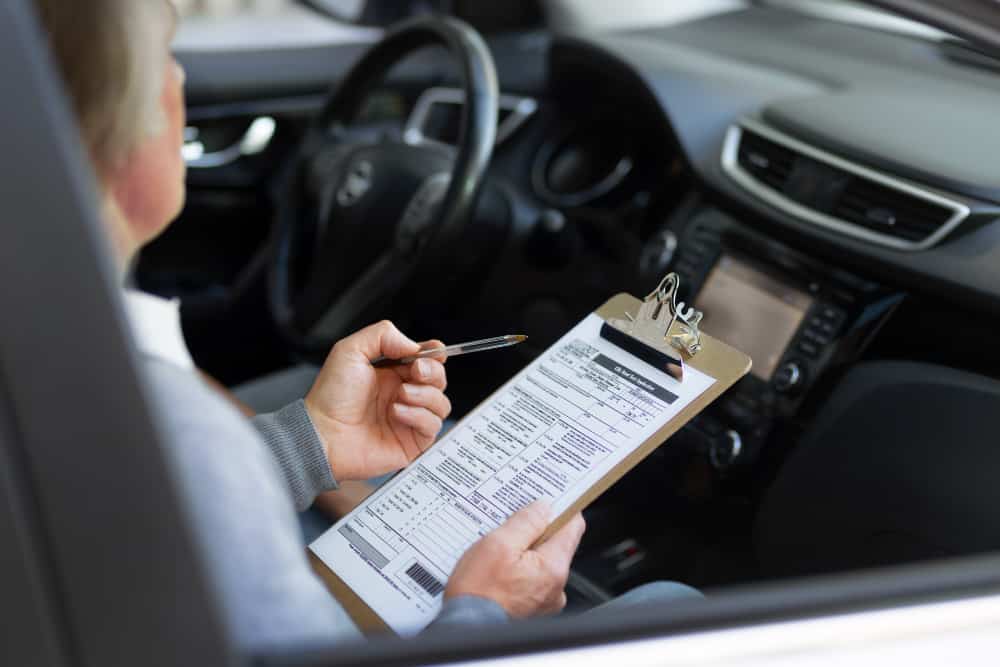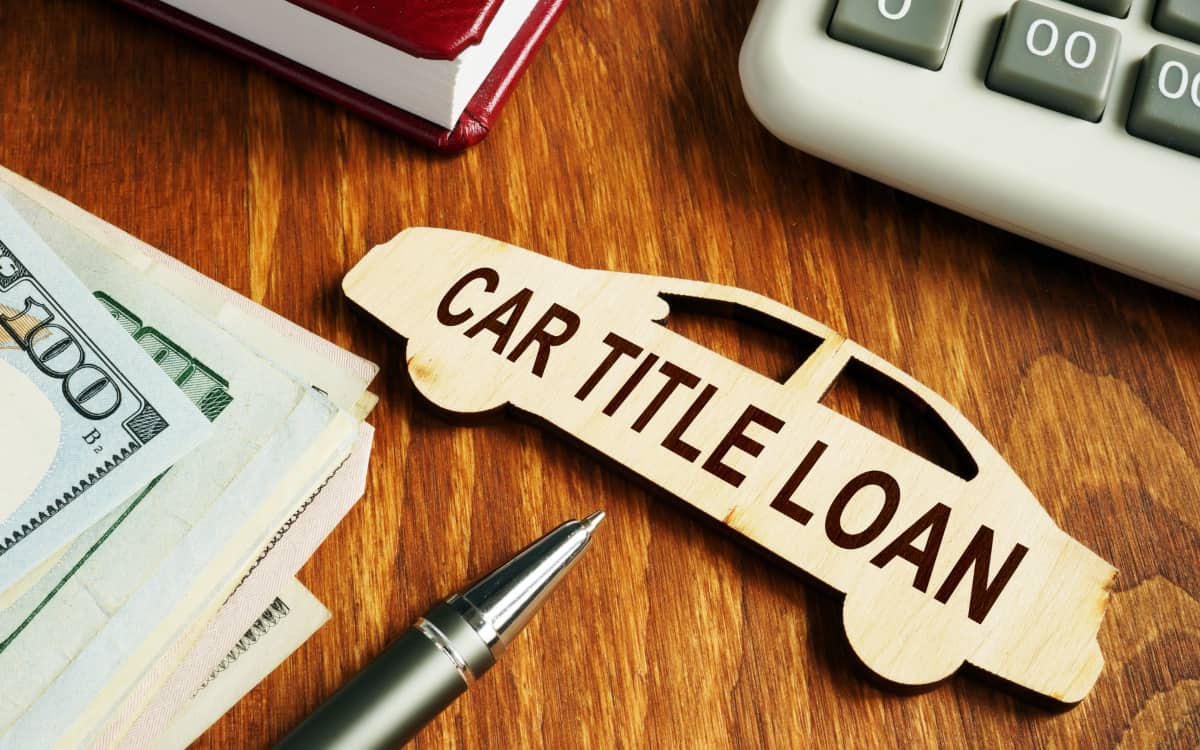Cars are expensive. Their prices can be out of reach for many shoppers. Even with long-term auto loans, it can be tough to afford a new car. Fortunately, car leasing allows consumers to get behind the wheel of a new vehicle with a monthly payment that’s usually lower than it would be if you purchased it. Leasing allows you to replace your car every few years while maintaining relatively low monthly lease payments. Learn more about buying vs. leasing a car.
Is it Better to Lease Vs Buy a Car?
Whether you should purchase or lease a new automobile is a question without a simple solution. There are advantages and disadvantages to every approach. When you lease a car, you may usually receive better monthly rates, but you never actually get to keep the car. We expect lessees to keep their vehicles in essentially showroom condition for the duration of the lease and limit them in the number of miles per year they may drive. There is no equity for you to utilize as a down payment on your next car when your lease is over.
Considering you have to fork up the cash for the automobile’s full sticker price, it seems to reason that buying a car would be more costly. Nonetheless, if the loan is paid in full, no more payments will be required. You can put the car’s equity toward a down payment on a new vehicle. The sales tax you’ll pay on a purchase is usually more than the one you’d pay on a lease.
In this article, we’ll talk about the pros and cons of buying a car versus leasing one. Then, we’ll go over the steps required to both leases and buy a vehicle.
What Is Leasing?
Leasing is similar to renting an automobile, but for a longer time frame. Unlike when you buy a car when you lease you don’t have to pay for it all upfront; you only pay for the depreciation that will happen throughout the lease’s length, plus any fees and interest. For the most part, car leases are closed-end contracts, meaning that the final residual value is determined before the lease ever takes possession of the vehicle.
Typically, you need to make a down payment when leasing a vehicle, but this is not always necessary. The remaining leasing cost is spread out over several equal monthly instalments that also include interest accrual. Although most leases are for two or three years, they may be signed for virtually any amount of time. The drive-off costs for a lease typically include the down payment, any lease fees, documentation fees, acquisition fees, sales tax, security deposits, and title.
Leasing an automobile may seem straightforward, but the actual process involves a lot of financial details and has its own unique terminology that doesn’t apply when purchasing a vehicle outright. If you’re thinking about signing a lease on a car, these are some of the most common phrases you’ll hear:
Capitalized Cost
The vehicle’s capitalized cost (or cap cost) is the purchase price of an automobile. This is like buying a vehicle; you should try to obtain the best deal you can. This is a standard, unchanging cost of automaker-backed leases. When signing a lease, it’s customary to try to negotiate a lower rate with the landlord.
Cap cost reductions refer to any savings realized through negotiating a lower capitalized cost, for as through manufacturer-sponsored leasing promotions.
Residual Value
It’s preferable to have a residual that makes up a larger percentage of the car’s cap cost, whereas a low residual will result in you paying a larger chunk of the car’s cap cost. An expert predicts how much a leased automobile will be worth when the lease expires, which is what is meant by the phrase “residual value.”
Automobiles of varying values degrade at varying rates. Less depreciating vehicles with larger residual values will be your best bet when signing a lease.
Money Factor
It would be way too easy for leasing companies to use an interest rate when discussing lease contracts. Instead, they use a number called the money factor to represent the amount of interest that’s included in each monthly payment.
To convert the money factor to a more familiar interest rate, you multiply it by 2,400. You can either do the math yourself or use an online money factor calculator to perform the conversion for you.
What Is Car Buying and Financing?
The most common and time-tested approach to getting behind the wheel of a new car is to purchase one. The buyer negotiates the price of a vehicle, truck, or SUV with the seller, deducts any applicable rebates and incentives and any down payment or trade-in value, and then takes out a loan to cover the remaining balance. A car that costs $25,000 without a trade-in or down payment would require you to pay the whole price, plus interest on any auto loans you may have.
When you get an auto loan, the lender will keep the title until you pay off the amount. After that, you’ll be handed the car’s title and full ownership rights.
Finance firms, credit unions, and banks provide the majority of loans for brand-new automobiles. Usually, obtaining a loan to buy a car requires a credit score. A lender delivers the money to cover the cost of the car when the loan application has been approved. The remaining balance (the principle) of the loan is repaid along with accrued interest in a series of equally spaced monthly instalments. The term of a car loan is its whole duration. Contract durations range from a few years to seven or eight. Buyers should avoid auto loans with terms longer than five years, according to several industry experts. Buyers who are just concerned with the monthly payment often disregard this ceiling.
What Are the Benefits of Leasing a Car?
There are several distinct advantages to leasing versus buying, including:
Lower Monthly Payments
Leasing often results in lower monthly payments compared to buying a car since you are only responsible for the estimated depreciation throughout your time lease period rather than the whole cost of the vehicle. Finding a payment that works within your monthly budget is important, but focusing only on that number should not be your first consideration when shopping for a car. Take a look at the whole price of the car instead.
Latest Technology
A large number of advanced safety, entertainment, and connection technologies now standard on new vehicles contribute to their higher pricing. Leasing automobiles every few years ensures you always have access to the most cutting-edge features. This includes safety features such as adaptive cruise control, automated emergency braking, and lane-keeping assistance. Affordability may necessitate foregoing cutting-edge features while shopping for a secondhand automobile.
Warranty Coverage and Maintenance
The manufacturer’s warranty will probably cover the entirety of your lease unless you have a very long agreement or significantly exceed the mileage restriction. Any important repairs covered by the warranty should be handled at no cost by the dealer’s service department. You understand that if you cause damage to the car, you will be expected to pay for the necessary repairs.
Trading-In Is Simple
The process of selling a secondhand automobile might be hassle. Leasing eliminates the need to find a buyer for your pre-owned vehicle. Don’t stress out about how much it’s worth.
You can return a leased automobile to the original dealer or, in some situations, to any other franchised dealer that sells that brand of vehicle. In the event that you exceed the mileage restriction or do other damage to the car, additional costs and paperwork may be required.
You May Save Some Sales Tax
Although sales tax regulations differ by jurisdiction, leasing a vehicle might save you a significant amount of money. Sales tax may be due solely on the sum of the down payment and the remaining monthly instalments in some areas. But in other areas, you’ll have to fork up sales tax on the full amount, just as if you bought the vehicle. One of the main benefits of leasing is diminished in such locations.
Potentially Smaller Down Payment
A lesser down payment is often required when leasing as opposed to buying a brand-new vehicle. In reality, there are some contracts that need no upfront costs. Some proponents of leasing advise consumers to arrange leases with the lowest feasible down payments, despite the fact that this would result in higher monthly payments. The logic behind this is that if you put down a sizable sum at the start of the lease and something happens to the automobile before the end of the contract, such as a total loss or theft, you’ll be out of that money. Reduce the risk to your financial stability by putting less money down on the car.
What Are the Cons of Leasing a Car?
Although there are advantages to leasing, it is not the optimal choice in every circumstance. Several drawbacks of leasing should be weighed before committing to a long-term agreement.
You Don’t Own the Vehicle
The leasing firm is the legal owner of the vehicle throughout the lease term. There is never a time when you may claim ownership of the car. You may think of it as the difference between renting an apartment and purchasing a home.
Due to the fact that the leasing company is the legal owner of the automobile, there may be restrictions on your use, modifications, and even where you may drive.
You Always Have a Car Payment
Vehicle leasing guarantees a regular monthly expense. Once the balance of a financed car purchase is completed in full, the customer no longer has to make any more payments on the vehicle. You may expect more stability in your budget with a vehicle loan payment schedule compared to a lease.
There’s a Mileage Limit
Lease agreements for vehicles nearly often have stringent annual mileage limitations (typically 10,000 to 15,000 miles per year). If you go over your lease’s mileage limit, you might end yourself paying a lot more than you bargained for. Excess mileage fees typically range from 15 cents to over 40 cents per mile, however, this does vary by automobile model and leasing firm. An excess mileage tax of 25 cents per mile multiplied by the average American commute of 25 miles per day would result in a daily cost of $10. If you choose to end the contract early, there is also an early termination fee.
You Can’t Customize Your Ride
There are motorists who enjoy having their vehicles stand out from the crowd with unique paint jobs, special wheels, and other modifications. Leasing is not the best option if this describes you. Most leases stipulate that the vehicle be returned with similar wear and tear to when you first drove it off the lot.
No Cash For Your Next Car
While it may be possible to recoup a nominal sum at the lease’s conclusion, most lessees will be out of pocket and unable to put anything toward the down payment of their next vehicle. However, many lessees wind up paying disposal, excess wear, or mileage costs when their leases come to an end.
That means there will be no initial rent due when you sign your new lease. You’ll have to delve into savings or go carless until you can afford the down payment on your next lease unless you can discover a zero-down leasing agreement.
Surprising Lease-End Costs
Previous sections have addressed how the final amount you owe at the conclusion of the lease might come as a shock. You should not assume that you can just leave your automobile and go about your day. It’s easy to get a rough idea of how much you’ll have to pay in overage fees if you drive more than you were allowed. It is more difficult to speculate on the number of extra wear charges that a dealership could seek to claim. They may have a lot of leeway in setting prices, and that leeway might be tied to your commitment to leasing from them again in the future.
Use Restrictions
Once you pay off your automobile loan, you have the freedom to use it for any purpose you desire. However, when you sign a lease on a car, contrary to popular belief, you may not have the same level of freedom. Your leasing company can inform you about the permitted use of the vehicle for work and the specific areas where you are allowed to drive. The same applies if you plan to take the car to Mexico; you might need explicit written permission to drive it across the border. Additionally, some lending companies have similar policies and may restrict funded automobiles from leaving the country until the debt is fully paid off.
Leasing Can Be Complicated
The car-buying and financing processes are quite well-known to customers at large. Leasing has a few drawbacks, one of which is that it can be more difficult for customers to understand, especially those who have never done so before. You’ll need familiarity with leasing jargon, a method for calculating the lease’s total cost, and the willingness to pore over the contract with a fine-toothed comb to safeguard yourself against any unpleasant surprises.
Lease Deals Are Limited
Automobile manufacturers commonly resort to leasing arrangements when sales are slow in order to meet production needs. Less expensive lease incentives are a potential pro of leasing, but they can quickly become a con if they are tied to onerous requirements.
You Need Gap Insurance
Gap insurance pays off the amount you still owe on your lease if the vehicle is stolen or declared a total loss. Even if it’s not required, it’s a good idea to have the coverage on any leased vehicle. Gap insurance is also available to protect car owners with upside-down auto loans. Gap insurance can be bought from many places, such as the dealership, your car insurance company, or even your bank or another financial institution.
You Can’t Get It Fixed Just Anywhere
Vehicle maintenance costs may be greater when leasing a vehicle as opposed to buying one outright. All scheduled maintenance must be shown to have been performed and done so in accordance with manufacturer guidelines. Manufacturers and leasing agencies can insist on using original equipment (OE) components, but they can’t compel you to go to any particular repair facility. There is a possibility that they will cost more than equivalent aftermarket components.
You Have to Return It in Great Shape
Returning the vehicle in poor condition might result in hefty charges at the conclusion of your lease. At the end of the lease term, the car should be in near-mint condition, barring any significant damage or defects beyond regular wear and use. On a car you own, you could just ignore the dent you got in the parking lot, but if you’re leasing a car, you’ll have to get it fixed or pay the dealer’s fee.
It’s a Binding Contract
A lease is a legally binding agreement between you and the leasing business. The financial consequences might be severe if you violate that agreement by skipping lease payments or returning the automobile before the agreed-upon duration. For instance, if you have a three-year lease on a car, you are typically committed to it for that long. Your ability to sell the car whenever you choose would be contingent on your ownership.
What Are the Benefits of Buying a Car?
A car purchase has benefits and drawbacks. Among the benefits of purchasing an automobile are:
You Own the Car
Buying a vehicle with cold, hard cash gives you instant ownership and complete freedom over its use. Lenders typically keep automobile titles as collateral while you’re still making payments on a car loan. However, there are usually no limitations on how you can use or modify the vehicle.
With every monthly payment made on a car loan, the borrower gradually increases their equity in the vehicle. Since most of your payments will initially go toward paying down interest, your equity will rise slowly. The interest rate drops and equity builds up faster the further along in the loan you are. Your considerable freedom when it comes to purchasing a new automobile is a result of your good equity. Vehicles driven by lessees never have any equity in them.
You will have positive equity in the automobile as long as equity growth outpaces depreciation. Maintaining positive equity can be challenging since new automobiles lose value significantly over the first few years they are used. This is especially the case if your auto loan term is quite lengthy. Make a big down payment and take out the shortest loan you can manage to retain positive equity.
You Can Drive and Drive and Drive
Almost all leases have a maximum allowed annual miles. In the event that it is exceeded, significant penalties will be assessed upon contract completion. With a car you own entirely or have a loan on, that is not the case. There are no restrictions on how far you can travel after leaving the dealer’s parking lot. Therefore, if you drive frequently and far, it is more cost-effective to purchase your vehicle.
Driving lengthy distances does not incur any additional expenditures other than those associated with gasoline and maintenance.
You Can Get Cash to Pay For Your Next Car
Whether you buy a car outright with cash or accumulate equity as you make loan payments, you should profit from the sale of your current vehicle when you go to purchase your next one. The money you get from a private sale or trade-in might go toward the purchase price of a brand-new car. A leased car never accumulates equity that can be put toward the purchase of a newer vehicle.
Make It Your Own
Owning a car gives you a lot of freedom to personalize it any way you choose, much beyond just hanging fuzzy dice from the rearview mirror. There are only two restrictions on how much personalization you can make to your car: your financial capacity and your sense of taste.
No More Payments When the Loan Is Paid Off
The need to make further payments ends after the last instalment of a car loan is paid or the full purchase price is paid in cash. That fact alone is compelling evidence in favour of a short auto loan and a long-term commitment to one’s automobile. If you buy a new truck with a four-year auto loan and maintain it for seven years, for instance, you will enjoy three years without making any car payments. There will be a car payment every month if you drive a rented vehicle.
You Can Sell on Your Own Schedule
Owning a car gives you the freedom to trade it in whenever you choose. Although it is recommended that you hold off on selling the vehicle until the loan is paid in full, you are free to do so if you so want. Unless you can locate a tenant willing to take over your lease, you’re stuck in your current location until the lease term ends.
What Are the Drawbacks of Buying a Car?
Buying a Car Is More Expensive in the Short Term
Auto loan payments typically exceed lease payments for similar vehicles by a significant margin. As a result, the monthly payments for such vehicles are higher for those who finance their vehicles. After they pay off the loan, they will decrease the monthly costs associated with automobile ownership.
You Have to Pay Interest on the Entire Cost of the Car
You simply need to pay for the anticipated depreciation that will occur during the lease term when leasing an automobile. All of the car’s price, less the deposit and trade-in, is subject to interest during the financing phase.
To Get the Best Terms, Make a Down Payment
Making a sizable down payment on a car might help you secure a lower interest rate and a shorter repayment period. The loan-to-value (LTV) ratio goes down, making your loan application more appealing to potential lenders.
Many leases only allow you to adjust the monthly payment based on the size of your initial deposit.
The Warranty Will End
Most warranties on new cars are long enough to cover the length of most leases on new cars. In reality, though, most automobile owners keep their rides much past the warranty’s expiration date. Expensive repairs not covered by the warranty will be on you once the guarantee has ended.
The Verdict
Whether you should buy or lease your next vehicle depends on a variety of factors that are unique to each individual case. In the short run, leasing may save money, but in the long run, it will likely cost you more. Unlike a lease, which imposes both financial and legal limits, ownership of a vehicle builds equity that may be used to finance future vehicle purchases.
Your present financial situation, your vehicle demands, and your future goals should all factor into your decision.




